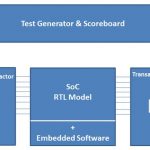Earlier this year, when I was looking at Carbon’spast year performance which provided record breaking revenue with whopping jump in bookings, one thing was certain that Carbon Performance Analysis Kits (CPAKs) would drive major growth in future, not only for Carbon, but also for the semiconductor industry. It will initiate … Read More
Tag: systemc
Expansion at Calypto through Real Value Addition in SoC Design
When we get the notion of expansion of a company, it always provides a positive picture about something good happening to boost that expansion. There can be several reasons for expansion such as merger & acquisition, formation of joint venture or partnership, large customer orders and so on. However, organic expansion which… Read More
Designing the Right Architecture Using HLS
With the advent of HLS tools, general notion which comes to mind is that okay, there’s an automated tool which can optimize your design description written in C++/SystemC and provide you a perfect RTL. In real life, it’s not so, any design description needs hardware designer’s expertise to adopt right algorithm and architecture… Read More
Optimize Your Interconnect & Design at System Level for Best Results
As the SoC design size, complexity and functionality keeps on increasing with multiple IPs packed together and design time and time-to-market keeps on decreasing amid critical constraints on PPA, there is no other alternative than to do the design first-time-right not to miss the window of opportunity. And that could be possible… Read More
Vlang – Opportunities Galore for Productivity & Performance
Yes, verification technologies are open to innovation for improved productivity and performance in the face of ever growing SoC/IP design sizes and complexities. There is not much scope left in processor speed to improve, other than multi-core processors in servers which again need software properly architected to be thread-able… Read More
Accelerating SoC Verification Through HLS
Once upon a time there was a struggle for verification completion of semiconductor designs at gate level. Today, beyond imagination, there is a struggle to verify a design with billions of gates at the RTL level which may never complete. The designs are large SoCs with complex architectures and several constraints of area, performance,… Read More
Book review: “shift left” with virtual prototypes
Shipping a product with complete software support at official release is a lot more difficult than it sounds. Inevitably, there is less than enough hardware to go around, and what little there is has to fill the needs of hardware designers, test and certification engineers, software development teams, systems integration teams,… Read More
TLM Modeling Environment Goes Commercial
The most successful EDA companies typically choose a domain where they have deep knowledge, then serve a few leading-edge customers that are willing to work with a start-up in exchange for early access to that new technology. The theory is that if you can satisfy the leading-edge customer then you can also satisfy the rest of the … Read More
How Do You Verify a NoC?
Networks-on-chip (NoCs) are very configurable, arguably the most configurable piece of IP that you can put on a chip. The only thing that comes close are highly configurable extensible VLIW processors such as those from Tensilica (Cadence), ARC (Synopsys) and CEVA but Sonics would argue their NoCs are even more flexible. But … Read More
With SCE-MI, timing really is everything
In one of my favorite movies, Brad Pitt utters the only question that matters in baseball or technology management in the face of uncertainty: “Okay, good. What’s the problem?” Not surprisingly in that scene, as the question circles the table of experts used to doing things the old way, not a single one can answer it correctly in the… Read More




